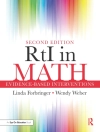Developed countries and certain regions of economically emerging nations have displaying a rapidly growing population of the oldest-oldónonagenarians, centenarians, and supercentenarians. As this trend continues, we must redirect some of our research on aging to the experience of advanced old age and discovering individual and community factors that improve the quality of life during this life stage. This state-of-the science, multidisciplinary Annual provides a comprehensive discussion of the factors promoting healthy survival and/or ensuring a good quality of life for the oldest elderly. It features an international representation that includes Denmark, Finland, France, Italy, the Netherlands, the United Kingdom, Sweden, Japan, and North America. The Annual disseminates the most current research regarding this population and notes gaps in our knowledge.
The book addresses ongoing demo-epidemiological changes regarding longevity, estimates of oldest-old populations, and prevalence of chronic and degenerative diseases, frailty, and old-age dependency. The meaning of healthy longevity as a theoretical concept is explored. Grounded in the fundamental issue of whether or not the prevalence of poor health or poor quality of life inevitably increases with age, recent research and ongoing studies from a variety of perspectives are presented from several nations. The book clarifies the known and hypothetical factors favoring healthy longevity, from genes to social integration. Additionally, chapters explore gender differences in age trajectories and changes over time. Special attention is given to the social and cognitive dimensions of healthy longevity.
Key Features:- Disseminates new scholarly research about a rapidly growing segment of the populationóthe oldest old
- Offers multidisciplinary and international perspectives about the factors that promote healthy survival and improve quality of life
- Addresses the social and cognitive dimensions of healthy longevity
- Provides important information regarding health care costs for this population
- Includes the research of seasoned and emerging scholars
Spis treści
’
Preface
Jean-Marie Robine, Carol Jagger and Eileen Crimmins
Section 1: How healthy are the longest lived?
Chapter 1. The oldest-old: Health in Europe and the United States
AÔda SolÈ-AurÛ and Eileen M. Crimmins
Chapter 2. Age Trajectory of High Cognitive Functioning Among the Oldest Old
Mikael Thinggaard, Matt Mc Gue and Kaare Christensen
Chapter 3. Malleability of human ageing: the curious case of old age mortality in Japan
Frouke M. Engelaer, Eugene M.G. Milne, David van Bodegom, Yasuhiko Saito, Rudi G.J. Westendorp and Thomas B.L. Kirkwood
Chapter 4. Quality of health care: approaches and findings from the English Longitudinal Study of Ageing
Nicholas Steel, David Melzer and Suzanne Richards
Chapter 5. The semantic network of ageing well
Rocio Fernandez-Ballesteros, Maria-Angeles Molina, Rocio Schettini and Marta Santacreu
Chapter 6. A New Concept of Successful Aging in the Oldest-old. ñ Development of gerotranscendence and its influence on the psychological well-being ñ
Yasuyuki Gondo, Takeshi Nakagawa and Yukie Masui
Section 2: What drives healthy longevity?
Chapter 7. Optimizing Human Healthspan and Lifespan: Insights from Okinawa and Hawaii
Bradley J. Willcox, Makoto Suzuki, Timothy A. Donlon, Qimei He, John S. Grove, Kamal H. Masaki and D. Craig Willcox
Chapter 8. Mobility in human aging: A multidisciplinary lifespan conceptual framework
Luigi Ferrucci and Jack M. Guralnik
Chapter 9. Physical and Biological Indicators of Health and Functioning in U.S. Oldest-Old
Jennifer Ailshire and Eileen Crimmins
Chapter 10. Extended Fixed Attribute Dynamics Method and an Illustrative Application in Bio-demographic-genetic Analysis on Longevity
Zeng Yi
Chapter 11. Gene expression biomarkers and longevity
David Melzer, Luke C Pilling, Alexander D Fellows, Alice C Holly, Lorna W Harries and Luigi Ferrucci
Section 3: Are we living longer healthier?
Chapter 12. Understanding the mortality decline at older ages: improved life course or improved present period?
Dorly Deeg, MajogÈ J.G. van Vliet, Jan W.P.F. Kardaun and Martijn Huisman
Chapter 13. Recent trends in disability-free life expectancy in the French elderly: Twenty years follow-up of the Paquid cohort
Karine PÈrËs, Arlette Edjolo, Jean-FranÁois Dartigues and Pascale Barberger-Gateau
Chapter 14. Trends of functioning and health in nonagenarians – the Vitality 90+ Study
Marja Jylha, Linda Enroth and Tiina Luukkaala
Chapter 15. Trends over time in cognitive function and activities of daily living among Danish centenarians
Karen Andersen-Ranberg
Chapter 16. Sex differences in healthy life expectancy in the Netherlands
Frouke M. Engelaer, David van Bodegom and Rudi G.J. Westendorp
Conclusion
Jean-Marie Robine, Carol Jagger and Eileen Crimmins
’O autorze
Eileen Crimmins, Ph D, is the AARP Professor of Gerontology at the University of Southern California where she is currently the director of the USC/UCLA Center on Biodemography and Population Health, one of the Demography of Aging Centers supported by the U.S. National Institute on Aging.












